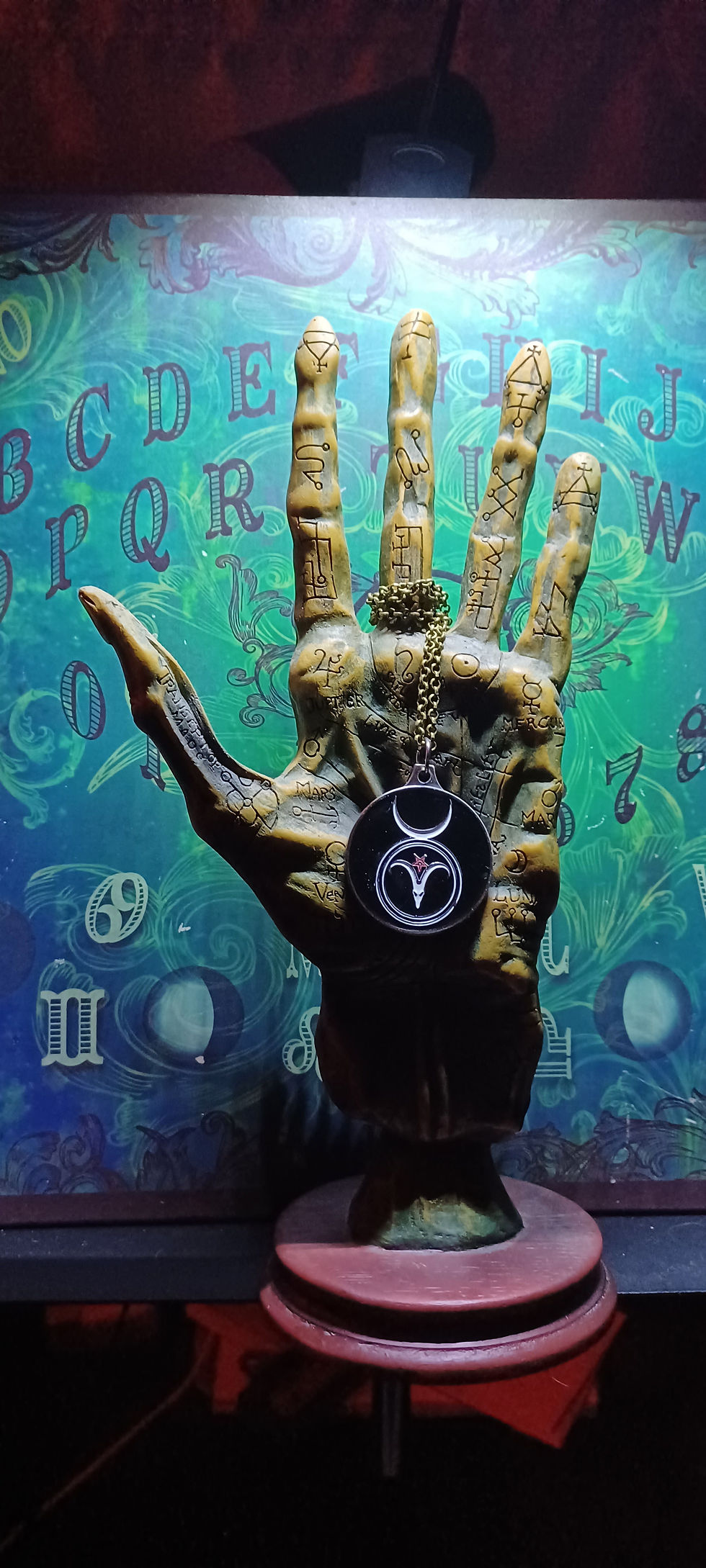SATANISM 101
- Etu Malku

- May 24, 2024
- 4 min read
Updated: Apr 15
When people hear the word "Satanism," their minds usually jump to devil worship, sacrifices, or something out of a horror movie. But anyone who's spent even a little time in occult or Left-Hand Path circles knows that Satanism isn't a one-size-fits-all thing—and Anton LaVey’s version of it is a world apart from those pop-culture myths.
LaVeyan Satanism, named after Anton Szandor LaVey—the man who founded the Church of Satan in 1966—is more philosophy than faith, and more rebellion than religion. It’s atheistic at its core. Satan isn’t a god to be worshipped but a symbol: a stand-in for the wild, indulgent, unapologetically human self.
LaVey’s Satan is about you. Your desires, your instincts, your strength. In his view, Satan represents the outsider, the rebel, the one who refuses to kneel. His Satanism rejects guilt, embraces indulgence, and celebrates rational self-interest. It’s not about summoning demons—it’s about becoming the master of your own life.
LaVeyan rituals, often misunderstood, are theatrical in nature—psychodrama, as LaVey called it. They’re designed to release emotion and sharpen intention, not to petition spirits or deities. His foundational book, The Satanic Bible, outlines these principles clearly, along with others like The Satanic Rituals and The Satanic Witch.
LaVeyan Satanism isn’t the only game in town. Theistic Satanists—those who do believe in Satan as a literal being—walk a very different path.
These practitioners see Satan as a god or spiritual force. They engage in rituals aimed at communion, devotion, and spiritual empowerment. Some revere Satan as a liberator, others as a divine teacher or cosmic adversary. There’s no one way to “do” Theistic Satanism, and that diversity is part of what makes it powerful.
There are also other non-theistic Satanists who aren’t strictly LaVeyan. Some lean more into secular humanism or political protest, using Satan more as a cultural icon than a religious one. While they share some values with LaVey—like challenging religious dogma and valuing personal freedom—they often break from his rigid structure.
Calling it LaVeyan Satanism matters because it makes things clear. It tells you this is Anton LaVey’s version—not a religion, not devil worship, but a philosophy of radical self-determination. That clarity respects the broader spectrum of Satanic thought while giving LaVey his due as the architect of a very specific worldview.
If you want to trace Satan as a symbol of rebellion, you have to go back a few centuries. Way before LaVey, before the Church of Satan, there was Paradise Lost by John Milton.
Milton’s Satan is no one-dimensional villain. He’s proud, articulate, tragic, and—at least in the early parts of the poem—deeply sympathetic. He defies tyranny and chooses freedom over submission, even if it costs him everything. “Better to reign in Hell than serve in Heaven,” he says—and that line lit a fire under generations of artists, rebels, and occultists.
Romantic poets like Blake, Shelley, and Byron picked up the torch and ran with it, turning Satan into a literary archetype of individualism and defiance.
LaVeyan Satanism, in many ways, inherits this tradition. LaVey’s Satan may not be Milton’s literal angel, but the attitude is the same: challenge authority, embrace your nature, and never grovel.
This is why some have started using the term Miltonian Satanism to describe the broader, literary and philosophical tradition that inspired both Theistic and non-Theistic Satanisms. It gives credit to the mythic and artistic roots that shaped modern Satanic thought.
Satan hasn’t always been about the occult. During the American and French revolutions, radicals invoked Satan as a symbol of resistance and personal liberty. Thinkers like Proudhon and Bakunin openly identified with Satan as the eternal rebel, the enemy of tyrants, and the spirit of insurrection.
Later, writers like Stanisław Przybyszewski took it even further. He openly promoted a Satanic worldview—one that saw Satan not just as a symbol, but as the embodiment of human freedom, defiance, and enlightenment. This was the beginning of Satanism as a philosophy in its own right, divorced from reactionary Christian framing.
Unfortunately, when most people hear “Satanism,” they still think of what’s best called pseudo-Satanism. This is the Hollywood stuff: black robes, human sacrifice, blood rituals, and cartoonish evil. It’s got nothing to do with the real thing.
Pseudo-Satanism comes from a mix of Christian fear-mongering and media sensationalism. It appeals to the uneducated and the unstable—people who adopt Satanic imagery without understanding it. In some tragic cases, it draws in troubled teens looking for power or identity.
This caricature feeds into moral panic, like the Satanic Panic of the '80s and '90s, and unfairly stains real Satanists—whether LaVeyan, Theistic, or otherwise—with accusations of criminal behavior.
Differentiating real Satanism from pseudo-Satanism is more than a matter of pride—it’s about truth, clarity, and respect for the path.
Satanism is not a monolith. There’s LaVeyan Satanism, built on atheistic philosophy and personal sovereignty. There’s Theistic Satanism, rooted in spiritual practice and reverence for Satan as a being. And then there’s the deeper, symbolic tradition—what we might call Miltonian Satanism—which flows like an underground river beneath them all.
Understanding these differences helps us appreciate the richness of Satanic philosophy and its long history of challenging the status quo. It also helps us push back against the cartoonish misconceptions still plaguing the word “Satanism.”
Whether you see Satan as a god, a metaphor, or a literary hero—the important thing is that you see clearly.


